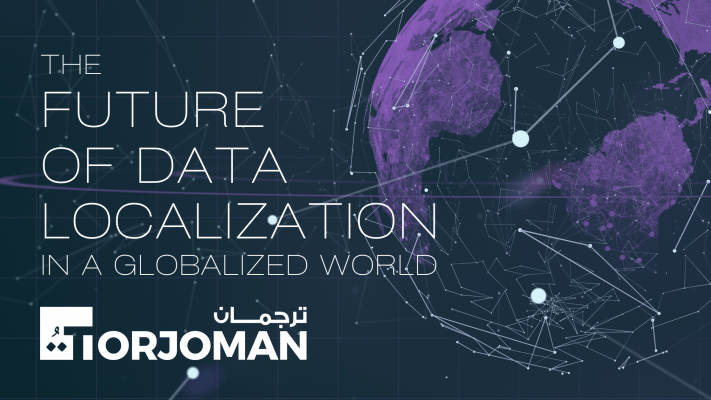Have a Big Project?
Big numbers, lots of documents and multiple translations?
Our top performing teams deliver unmatched quality on time for you
to hit your business goals.

How the fragmented picture of data in motion – and the wildly disparate regional policies that secure it – creates issues for global companies.
As the value of data has grown in the world economy, governments have been increasingly willing to impose limits on transmitted data across national boundaries. Regarding the latest research from the Information Technology and Innovation Foundation, the number of nations imposing legal hurdles to protect data from flowing easily has grown substantially, from 35 in 2017 to 62 currently. As a result, there is a demand for corporations to store information on their own country in order to preserve data privacy, public safety, and domestic industry. Although legislation such as the EU’s General Data Protection Regulation do not compel data storage locally, a growing number of governments are following this. However, there is indeed a catch: although storing information within borders makes it simpler for governments to manage and control, it also indicates that certain enterprises may lose significant potential.
Localization goes global
According to some nations, data storage is required locally, while others compel corporations and other institutions that manage and send confidential material to have a physical presence within the country in question. New progress in data security legislation, comprising rules in nations all across the globe, are imposing enormous pressure on multinational firms to guarantee that their organizational processes and customer handling methods comply with data security standards. Then how can you handle all of these different technological, legal, and commercial requirements? We’ll reach that point later.
Data localization and the policymakers’ dilemma
There seem to be two possible routes for the global community to follow when regional economies implement data localization rules. China, for example, imposes restrictions on information exchange and requires businesses to follow its rules. The other, which is adopted by a number of nations (including the U.s and portions of Europe), provides for comparatively unrestricted cross-border data transfer.
Data is becoming the most precious asset on the globe. Likewise, an organization’s most significant assets are its intellectual property (IP) and brands, which act as portals to its offerings. Alibaba, Alphabet, Amazon, Apple, Facebook, Microsoft, Tencent, and Visa, for example, are some of the world’s most powerful corporations, and most of their vital infrastructure is in the web, with data flowing across huge distances in both autocratic and democratic countries. But how can you come up with a criteria that meets everyone’s requirements?
Going local, one small step at a time
Data privacy legislation (and specifically data localization) have their own set of concerns, as previously mentioned. Working on developing a template that allows the user to easily localize, will help you focus on satisfying your customers’ requirements, regardless of their location or the language they speak. As with the help of any localization and translation company in Dubai, you can easily localize the data you own and communicate with your customers in the way that suits them, regardless of any obstacle.
Considering this, the best approach is adopting the risk-based strategy, with a comprehensive team that examines data methodologies on a regular basis and connects them to the company’s objectives.
There are two types of data. The first is related to business functions such as marketing, human resources, and finance. That information may be anonymized before being inputted in an extremely safe and effective manner (e.g., end-to-end encryption). The second concern is personal consumer information. Conducting a stock of your users’ data under the constraints of GDPR, that demands, among several other things, that “each operator and supervisor should keep a record of processing operations,” is a useful approach to determine risk in this area.
Where’s the meeting point?
In the end, firms who want to compete must understand their data transfer and how it is kept. However, thinking of data maps as an everlasting records of your corporate’s data flow would be a massive mistake. As data maps must be updated whenever a decision-making process or department structure changes, or new data is introduced in a new layout.
Although constructing consistent regulations and guidelines that countries around the world will be able to implement is the best hope for data localization, the segmented scenery of data transmission will reshape how global companies run, and cloud providers have already started to tackle this problem of localization by proposing carefully developed alternatives.
Big numbers, lots of documents and multiple translations?
Our top performing teams deliver unmatched quality on time for you
to hit your business goals.
Ready to burst your borders and need work done quickly?
Order Now! To get an instant assessment and quote.
Don’t wait, we’re ready.
SAVE TIME & MONEY!
Order from our mobile app now